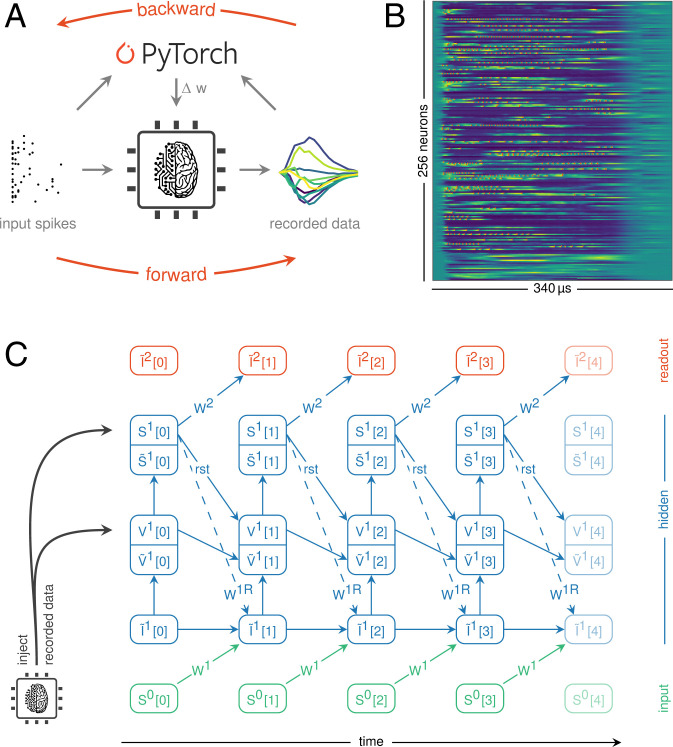Fig. 2.
Surrogate gradient learning on BrainScaleS-2. (A) Illustration of our ITL training scheme. The forward pass is emulated on the BrainScaleS-2 chip. Observables from the neuromorphic substrate as well as the input spike trains are processed on a conventional computer to perform the backward pass. The calculated weight updates are then written to the neuromorphic system. (B) Parallel recording of analog traces and spikes from 256 neurons via the CADC. (C) The differentiable computation graph results from the integration of LIF dynamics. The time dimension is unrolled from left to right, and information flows from bottom to top within an integration step. Synaptic currents are derived from the previous layer’s spikes and potential recurrent connections, multiplied by the respective weights (W). Stimuli are integrated on the neurons’ membranes (V), which trigger spikes (S) upon crossing their thresholds. These observables are continuously synchronized with data recorded from the hardware. Spikes as well as reset signals (rst) are propagated to the next time step, which also factors in the decay of currents and potentials.

